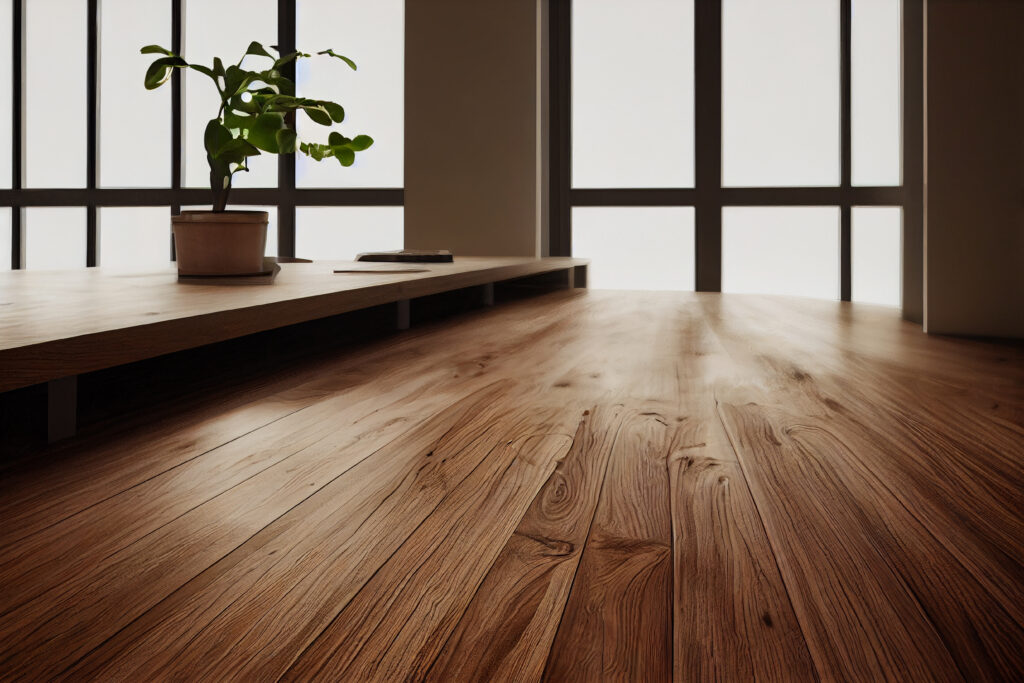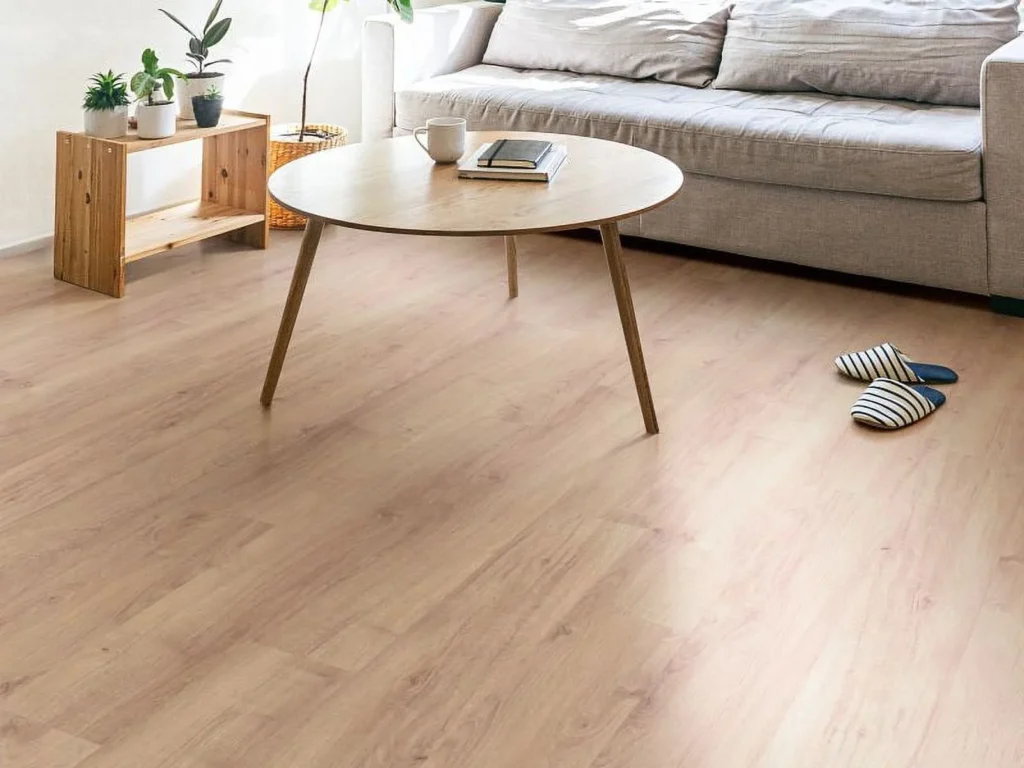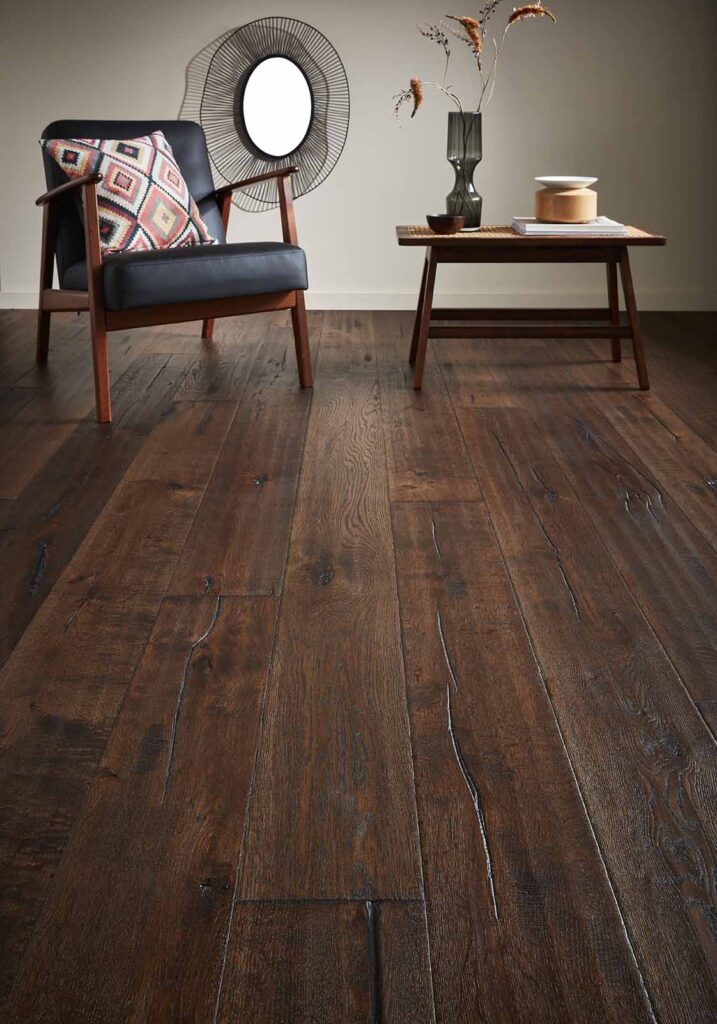Deciding between a floating wood floor and glued-down wood flooring can be difficult.
How can you determine which installation aligns more with your preferences?

Note:
Some contents in this article may contain external links. For more information, please refer to our
Privacy Policy
What is a Floating Wood Floor?
The floating wood floor isn’t affixed to the existing floor with nails or glue. It rests above it as a flooring option.
Using a click-and-lock mechanism, we fasten the wooden floor planks, enabling their grooves to interlock seamlessly without the need for additional fasteners.

Floating Wood Flooring Advantages
Easy to Install
Using a click-and-lock system, you slide the floating floor planks together and hear a click, locking them in place.
This method makes the process easier and saves you money by eliminating the need to buy nails and wood glue.
Durable
You no longer have to strain your fingers, use a hammer, or deal with adhesives when installing wood flooring. This method makes the process easier and saves you money by eliminating the need to buy nails and wood glue.
No Toxic Chemicals
Wood adhesives and glues include formaldehyde and phthalates in their composition.
Phthalates refer to a category of chemicals commonly utilized in the production of plastics. The CDC indicates that certain varieties of phthalates may pose significant risks to our reproductive health.
Wood Flooring provides comfortability
The gap between your subfloor and the hardwood planks acts as a cushioning layer for your flooring. Consequently, floating wood floors provide more comfort for your feet compared to conventional floor installations.
Floating Wood Floor Disadvantages
Prone to buckling and warping
Frequent high humidity in your region might not make a floating wood floor an ideal option for you.
The wooden floorboards and subfloors naturally absorb and release moisture from their surroundings, causing them to expand and contract. However, in humid regions, moisture accumulates in the air pockets between the subfloor and the floorboards.
Regular Maintenance on Floating Wood Floor
The wood planks bear the entire weight of a floating floor installation, potentially causing indentations over time.
Noise
If you’re planning to install floating wood floors in a nursery or home office, be aware that they can increase sound transmission.
What is Glued-Down Wood Flooring?
Securing floor planks with adhesive is a classic method for installing wooden flooring. This technique involves bonding the planks directly to the subfloor using glue. Once the adhesive cures, the planks are solidly anchored to the concrete subfloor.
When working with engineered wood or vinyl, you can choose between two options for adhering the flooring: using hard-set adhesive or applying pressure-sensitive adhesive.
Hard-set glued-down wood flooring requires the application of adhesives directly onto the concrete subfloor, followed by placing the planks on top until the adhesive cures. In contrast, pressure-sensitive glue-down flooring employs a peel-and-stick method. The planks come pre-coated with adhesive on the back; you simply peel off the protective layer and adhere them to the subfloor.
Glued Down Flooring Advantages
Fixed
The wood planks are adhered to the subfloor, which minimizes movement compared to a floating wood floor. This setup provides a sturdier feel underfoot, eliminating the bothersome sensation of the floor shifting beneath you.
Vapor Barrier Not Needed
With glued-down flooring, the adhesive serves as the vapor barrier, eliminating the necessity for purchasing and installing underlayments.
Less Noise
The floor planks are securely installed, which prevents them from creaking when walked on. This quality makes them ideal for areas where quiet is essential, such as your nursery, bedroom, or home office.
Glued-down Flooring disadvantages
Difficult to install & remove
Installing and removing glued-down flooring usually necessitates the expertise of a professional. While you might attempt to handle it on your own, lacking significant experience in floor installation can lead to complications. Additionally, this method involves the use of potent adhesives, which can pose health risks if not managed properly.
Costly Repairs
The costs for this expertise and materials can accumulate substantially.

Floating Wood Floor vs. Glued-Down Wood Flooring
Ultimately, it comes down to what you prefer. Every type of floor installation comes with its advantages and disadvantages.
Share This Article

